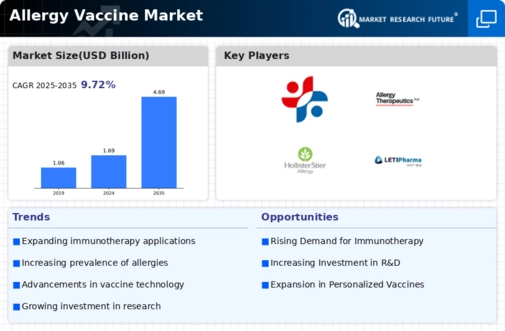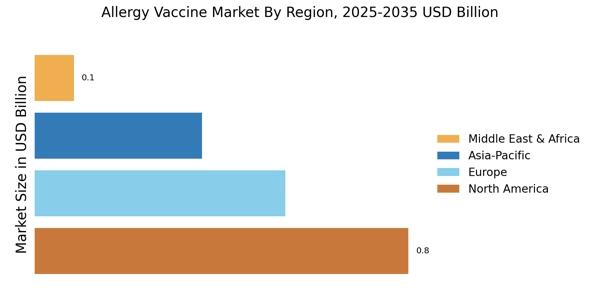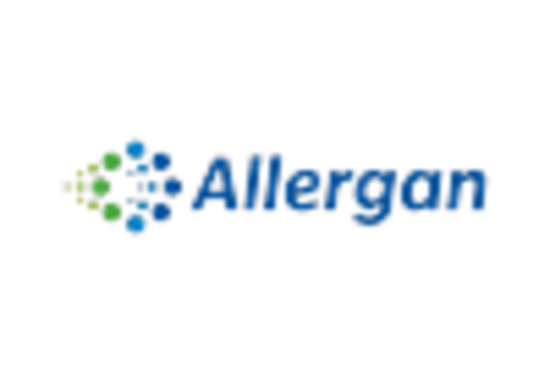Increasing Allergy Incidence
The Allergy Vaccine Market is experiencing a notable surge due to the rising incidence of allergies across various demographics. Recent data indicates that approximately 30% of the population suffers from allergic conditions, which has led to a heightened demand for effective treatment options. This trend is particularly pronounced in urban areas, where environmental factors contribute to allergy prevalence. As more individuals seek relief from symptoms, the Allergy Vaccine Market is poised for growth, with an increasing number of patients turning to vaccines as a viable solution. The potential for vaccines to provide long-term relief rather than temporary symptom management is likely to attract both patients and healthcare providers, further driving market expansion.
Rising Healthcare Expenditure
The Allergy Vaccine Market is also being driven by increasing healthcare expenditure, which is enabling greater access to allergy treatments. As healthcare systems allocate more resources towards allergy management, the availability of vaccines is expanding. This trend is particularly evident in regions where healthcare budgets are being prioritized for chronic disease management, including allergies. With more funding directed towards innovative treatments, the Allergy Vaccine Market is expected to see a rise in the development and distribution of vaccines. This increase in healthcare expenditure not only supports the growth of the market but also enhances patient access to potentially life-changing allergy vaccines.
Regulatory Support and Funding
Regulatory bodies are increasingly supporting research and development in the Allergy Vaccine Market, which is facilitating innovation and market growth. Governments are providing funding and resources to encourage the development of new allergy vaccines, recognizing the public health implications of untreated allergies. This support is crucial for advancing clinical trials and bringing new products to market. Additionally, streamlined regulatory processes are enabling faster approvals for novel therapies, which can significantly reduce time-to-market for new vaccines. As a result, the Allergy Vaccine Market is likely to benefit from an influx of new products and therapies, enhancing treatment options for patients.
Growing Awareness and Education
There is a marked increase in awareness and education regarding allergies and their management, which is significantly influencing the Allergy Vaccine Market. Public health campaigns and educational initiatives are informing patients about the benefits of vaccination as a preventive measure against allergies. This heightened awareness is fostering a more proactive approach to allergy management, encouraging individuals to seek vaccination options. As healthcare providers become more knowledgeable about the advantages of allergy vaccines, they are more likely to recommend them to patients. Consequently, this trend is expected to drive demand within the Allergy Vaccine Market, as more individuals recognize the potential for vaccines to improve their quality of life.
Technological Innovations in Vaccine Development
Technological advancements are playing a pivotal role in shaping the Allergy Vaccine Market. Innovations in biotechnology, such as recombinant DNA technology and novel adjuvants, are enhancing the efficacy and safety profiles of allergy vaccines. These developments enable the creation of more targeted therapies that can address specific allergens, thereby improving patient outcomes. Furthermore, the integration of personalized medicine approaches is expected to revolutionize treatment paradigms, allowing for tailored vaccine regimens based on individual patient profiles. As these technologies continue to evolve, they are likely to attract significant investment and research interest, propelling the Allergy Vaccine Market forward.


















Leave a Comment